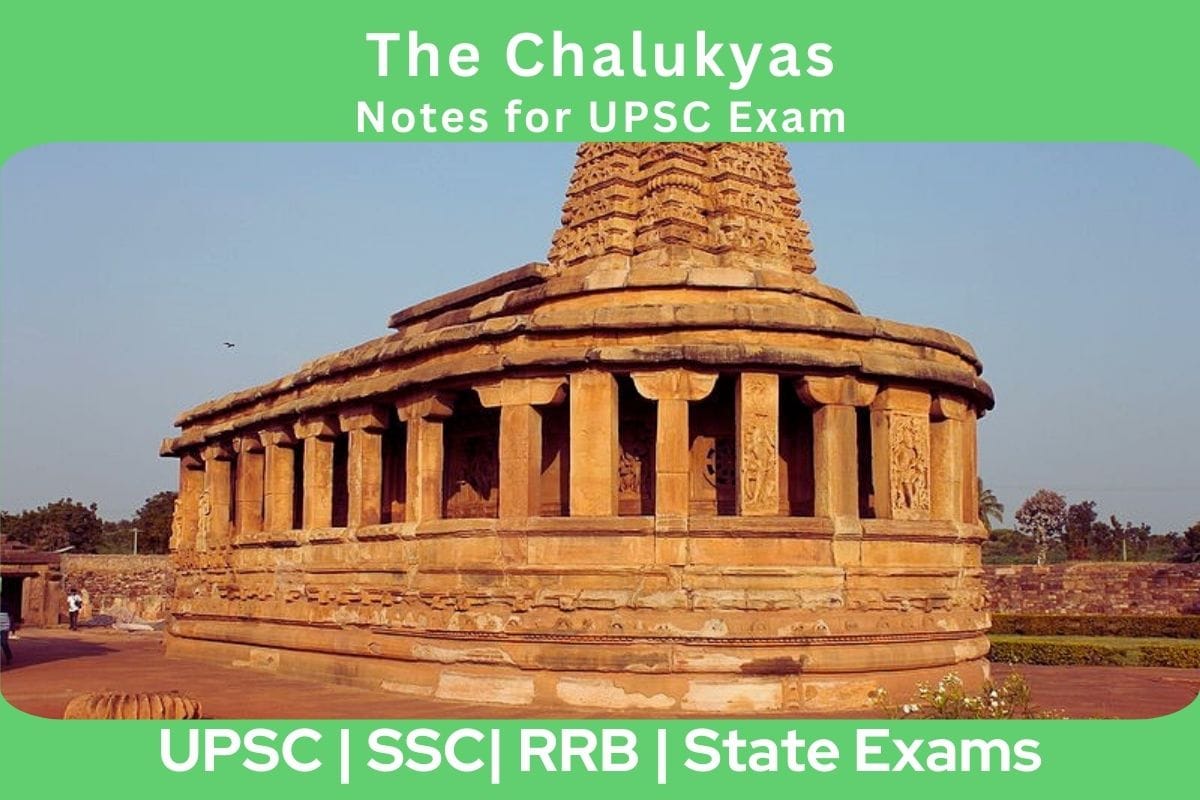
The Southern and Deccan regions of India were under the dominion of the Chalukyas dynasty from the 6th to the 12th century A.D. This era, considered the zenith of Karnataka, marked a significant chapter in the annals of South Indian history. Pulakesin I, the progenitor of the Chalukya dynasty, laid its foundation in 543 A.D., designating Vatapi as its capital. Their governance witnessed the establishment of a proficient administration, contributing to the historical legacy of the region. This topic is extremely important UPSC IAS and other state level exams.
The Chalukya Dynasty – Overview
- There were three Chalukya dynasties, connected yet distinct from each other.
- The Chalukya kingdom was established in the early 6th century A.D.
Chalukyas of Badami
- After the passing of Pulakesin II, the Chalukya dynasty of Badami started to decline.
- Pulakesin II is renowned as the notable emperor of the Badami dynasty.
- Their realm covered the entire Karnataka and most of Andhra Pradesh.
- They governed from Badami (Vatapi), with Pulakesin I founding the dynasty in 543 A.D.
Chalukyas of Kalyani
- The Western Chalukya empire is known as the Chalukyas of Kalyani.
- Descendants of Chalukyas of Badami, they emerged in the late 10th century.
- They ruled from Kalyani, present-day Basavakalyan, for about 200 years, facing constant conflicts with the contemporary Cholas.
- Vikramaditya VI stood out as the most noteworthy ruler of this dynasty.
Chalukyas of Vengi
- The Eastern Chalukyas arose after the demise of Pulakesin II.
- Their capital was Vengi, and until the 11th century, they held sway over the Eastern Deccan.
Chalukya Dynasty – Noteworthy Leaders
Pulakesin I
- He founded the Chalukya dynasty, ruling from 543 A.D. to 566 A.D., establishing the kingdom with Vatapi as its capital.
Pulakesin II
- As the pivotal ruler, he governed from 608 A.D. to 642 A.D.
- The details of his reign are inscribed in Aihole. Pulakesin II thwarted King Harshavardhana’s expansion in the South but suffered defeat at the hands of Pallava king Narasimhavarman I, leading to the capture and destruction of the capital.
Vikramaditya
- The successor to Pulakesin II, Vikramaditya sought vengeance by sacking the Pallava capital, Kanchi, and reestablished the Chalukya kingdom.
Kirtivarman II
- The final ruler of the Chalukya dynasty, Kirtivarman II, faced defeat at the hands of Dantidurga, founder of the Rashtrakuta dynasty.
Chalukya Dynasty – Governance
- The Chalukya dynasty had a strongly centralized administration.
- There wasn’t much self-rule in villages.
- Pulakesin I performed Vedic rites, with a focus on the Asvamedha sacrifice.
- They held significant power at sea.
- During the Chalukya dynasty’s rule, Buddhism declined, and Jainism gained prominence.
- Many temples dedicated to Lord Shiva and Vishnu were built during this era.
Chalukya Dynasty – Art and Buildings
- They created the Vesara architectural style.
- Known for cave temples in Ajanta, Ellora, and Nasik.
- Structural temples in Aihole, Badami, and Pattadakal, categorized into two stages.
First Stage
- Aihole and Badami house 70 temples, including Lad Khan, Durga, Jain temple at Meguti, and Huchimalligudi in Aihole.
- Important temples in Badami include Muktheeswarar and Melagutti Sivalaya.
Second Stage
- Pattadakal has 10 temples – 4 in northern style and 6 in Dravidian style.
- The Papanatha temple is a notable Northern style temple.
- Sangamesvara and Virupaksha temples are famous in Dravidian style.







